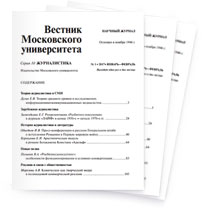Netherland Magazine Market at the Time of Pillarization and Today (Exemplified by the Weeklies Elsevier, Vrij Nederland, De Groene Amsterdammer)
Download paperPhD in Philology, Senior Researcher at the Chair of Media Theory and Economics, Faculty of Journalism, Lomonosov Moscow State University, Moscow, Russia
e-mail: gladkova_a@list.ruSection: Periodical Press
The paper examines transformation of the Dutch magazine market after the dissolution of the pillarization system, i.e. the division of the society into four ‘pillars’, in the Netherlands in 1960—1970s. The study of the three biggest weeklies — Elsevier, Vrij Nederland и De Groene Amsterdammer — revealed trends of the Dutch magazine market’s development in the post-pillarization time, and outlined changes in the target audience of the weekly magazines, their circulation rates, audience reach, the mission of the weeklies under new social and political conditions. The current research showed that the Dutch weeklies underwent a number of changes after the disappearance of the four ‘pillars’; these changes include the decline in circulation rates and the share of weeklies under analysis in the segment of opinion magazines, the transformation of the target audience from supporters of particular political parties to a broader group of people, the shift from party press to ‘catchall media’, etc.






